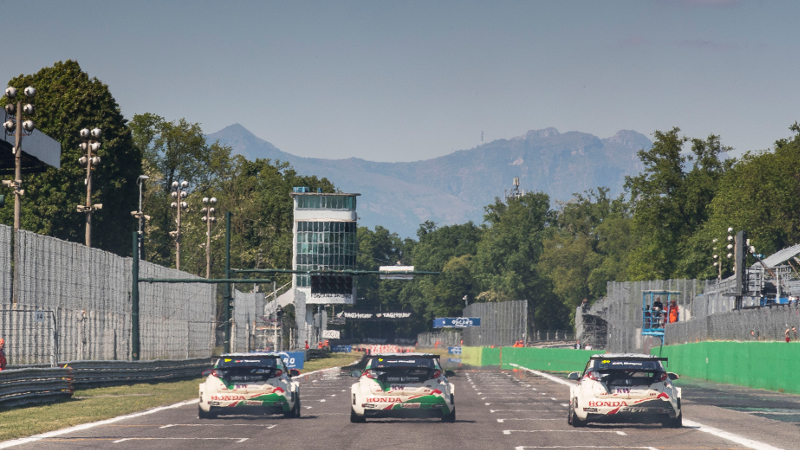WTCR boss François Ribeiro still believes that there is room for a top-level manufacturer touring car championship, despite the end of the WTCC and the creation of the WTCR Cup last week.
After a 13-year run, the WTCC will come to an end at 2017, being instead replaced with the WTCR Cup for 2018.
That means no direct manufacturer entries, lower costs and cars which are not as technically spectacular as the outgoing TC1 cars.
However, Ribeiro has openly admitted to considering the new DTM ‘Class One’ format for the future of the WTCC in the past, and when TCR was announced the Frenchman praised the concept as an important step in the touring car pyramid.
With WTCR now taking a temporary position at the top of the touring car world for 2018 and 2019, Ribeiro insists that there is still room for another set of regulations above those of the WTCR Cup.
“I really think there is space and demand for a very high level, competitive touring car championship and regulations,” said Ribeiro to TouringCars.Net. “It would be very important to design the positioning of it and what we want to get out of it.
“The TCR regulations positioning is very clear; the BoP will be critical to make it a success, but at least we know it provides a low-cost budget, bumper-to-bumper and door-to-door racing and from that perspective I think fans will like it.
“I expect WTCR to be very entertaining, but there is space above this for something which is more spectacular and more of a technology showcase.”
Reflecting on the four-year TC1 era, which saw only Citroën and Volvo enter as new manufacturers whilst costs for independents soared, Ribeiro believes that the regulations were very strong but not well placed within the touring car racing market.
“It’s not a disappointment, it was a cycle,” said Ribeiro to TouringCars.Net. “It was a true performance by the FIA to design a set of regulations which would allow a manufacturer like Volvo with the S60 or Honda with the hatchback Civic to produce a TC1 touring car without any waivers, without any derogations, all strictly upon the same technical set up.
“That was not the case for S2000. With S2000 you always had to argue to get the waiver for the flat floor, or argue to get the waiver for weight and so on. From that perspective I think TC1 provided manufacturers and engineers with a good platform to allow them to say ‘whatever product we have we can produce a good performing touring car’.
“If I look back at the TC1 era I would put more focus on whether the positioning of TC1 was right – it was either too expensive for privateers or not appealing enough to OEMs.
“TC1 regulations were meant to be S2000 with a bit more muscle and power, that was the spirit of the regulations, but I think we were too much higher, which generated much more development costs, wind tunnel testing and so on, and I’m not sure it helped or added something special to the show.
“I think it was too big a step for privateers, who went from €500,000 to maybe €1 or €1.5 million in the TC1 era, and maybe it was not strong enough as a set of regulations to be appealing to a lot of manufacturers including premium ones.
“Maybe the product was not perceived as the pinnacle of touring cars, or it was not perceived as a technology showcase. I think it’s more the positioning of the TC1 regulations which I would question if I look backwards at that cycle.”

